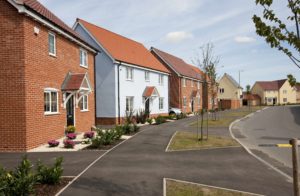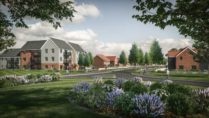Planning Reform Working Paper: Brownfield Passport: making the most of urban land
| Key Issues:
On the 22nd September 2024, the Ministry of Housing, Communities and Local Government (MHCLG) published it’s Planning Reform Working Paper on the Brownfield Passport: Making the Most of Urban Land (which can be found here):
|
Planning Reform Working Paper – Options On The Introduction Of Brownfield Passports
On the 22nd September 2024, the Secretary of State for MHCLG, The Rt Hon Angela Rayner MP, published a Planning Reform Working Paper titled, Brownfield Passport: Making the Most of Urban Land, which can be found here. As with the proposed planning committee reforms (which are also in a Working Paper), this document is not a formal consultation and is instead intended to inform discussions with the development sector, including housebuilders and site promotors, on future policy.
In a wider context, this Working Paper is also part of the UK government’s pre-election promise in their Plan for Change to deliver 1.5 million new homes over the lifetime of the current 5-year Parliament. Under these plans, councils, including Local Planning Authorities (LPAs), will be told they must ‘play their part to meet housing need’ by reaching ‘a new ambitious combined target of 370,000 homes a year’. New mandatory housing targets have also been introduced for councils in order to ramp up housebuilding across the country, with the National Planning Policy Framework (NPPF) also being revised to include a new approach to the greenbelt. The Working Paper proposals can therefore be seen as part of this overall reform agenda.
in their Plan for Change to deliver 1.5 million new homes over the lifetime of the current 5-year Parliament. Under these plans, councils, including Local Planning Authorities (LPAs), will be told they must ‘play their part to meet housing need’ by reaching ‘a new ambitious combined target of 370,000 homes a year’. New mandatory housing targets have also been introduced for councils in order to ramp up housebuilding across the country, with the National Planning Policy Framework (NPPF) also being revised to include a new approach to the greenbelt. The Working Paper proposals can therefore be seen as part of this overall reform agenda.
As the Working Paper outlines, the UK government looks at England’s ‘cities and towns’ as being ‘at the heart of modern Britain’. It states that they are ‘the engine room of our economy’ and that brownfield sites should be developed in a way that ‘delivers long-term prosperity’ and ‘sustainable patterns of development’. As developers know, brownfield sites used for residential development have a lot of advantages, being close to jobs, services, as well as often having excellent transport connections. Residential development in urban areas can also help deliver sustained economic growth, helping to attract future investment. This is one reason why the NPPF was revised last month, with it now being explicit about development on brownfield land being acceptable in principle in the application decision-making process. Stronger mandatory housing targets have also been introduced within the NPPF and the requirement to allocate more small urban sites for housing has also been strengthened. The introduction of a ‘brownfield passport’ should be seen as an extension of the UK government’s commitment to maximising the use of brownfield sites in order to meet its housing targets.
The Working Paper makes it clear that ‘Making the most of urban brownfield land through the planning system’ should mean:
- bringing vacant and under-used brownfield sites into more productive use;
- identifying where existing developed land would benefit from development, intensification or a change of use, including where appropriate and sustainable in suburban areas;
- having clear policies in place to communicate these opportunities, with plans and development proposals informed by the views of local communities; and
- ensuring such development contributes to making great places, supporting healthy, resilient communities – using design guidance and codes as well as master planning to be clear about the quality expected locally, supported by the right infrastructure.
 This definition is the premise on which the Working Paper proposals are based on and is very positive in terms of opportunities for developers and site promoters wanting to develop brownfield land. The proposals themselves include the following:
This definition is the premise on which the Working Paper proposals are based on and is very positive in terms of opportunities for developers and site promoters wanting to develop brownfield land. The proposals themselves include the following:
- Whilst not considering the granting of ‘automatic planning permission’ on suitable brownfield sites or removing appropriate local oversight of the development control process, the UK government does want to explore ‘ways in which providing more explicit expectations for development could lower the risk, cost, and uncertainty associated with securing planning permissions on brownfield land’. This development is to be welcomed and should mean that there is more certainty around the outcomes of the planning process, potentially allowing the risks involved to be better mitigated and prepared for.
- The document also outlines how there is scope ‘to make further policy changes, at both a national and local level, relating to the principle, scale, and form of development in different types of location’. It is these changes which the Working Paper call the ‘brownfield passport’, with the benefit to developers being that they set ‘clear parameters’ which, if met, would serve as accepted ‘markers’ of site ‘suitability’ and therefore planning approval would become a ‘default’, allowing far swifter decision outcomes.
- LDOs on brownfield land could also be used in the planning process in order ‘to give greater support to individual applications’ by providing upfront planning permission for specified forms of development across all or part of an authority’s area.
- Options to set minimum expectations for ‘certain types of brownfield location where a particular scale of development may be appropriate’ are also discussed in the Working Paper.
As the document concludes, the creation of a ‘brownfield passport’ would giver greater certainty and clarity for developers wanting to propose a residential scheme. The next steps are for the MHCLG to look at the sector response to the Working Paper options and then come back with a more detailed reform plan outlining the policy changes, if any at all. Developers and site promotors should therefore watch this space.

Strategic land and site promotion
“Chelgate gives a real insight into political thinking at all levels and all political persuasions, …

Energy and infrastructure
From new nuclear and unconventional gas to renewables, waste and airports, our team has worked …

